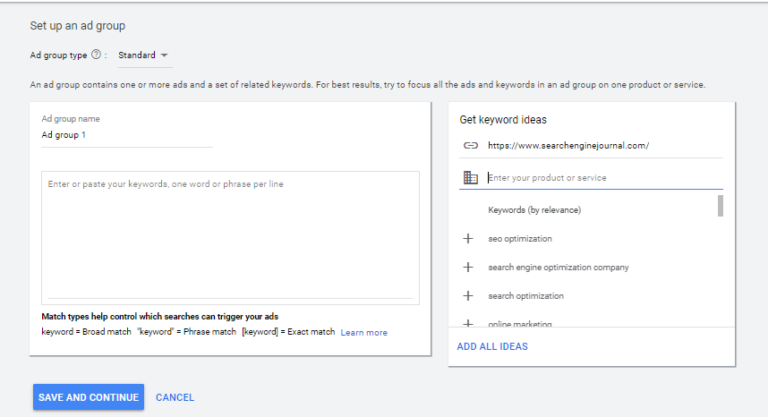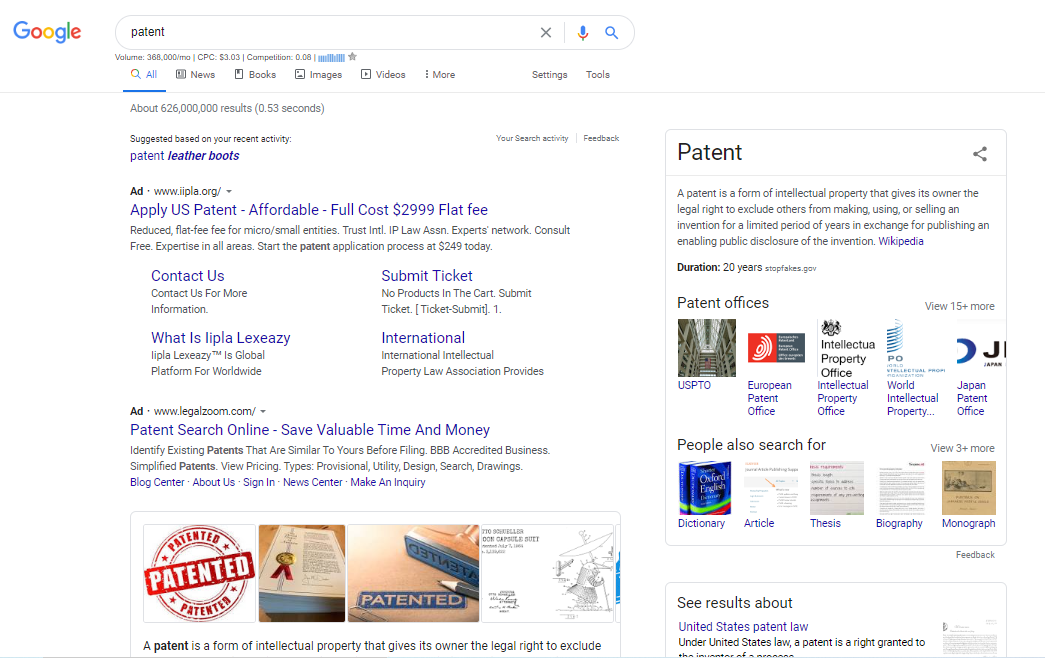
Improving your paid search campaign’s click-through rate comes down to pulling one of three levers. Read on to learn what they are and how they impact CTR.
In this installment of Ask The PPC, we’ll tackle the question:
What can I do to improve my CTR?
Click-through rate (CTR) is the amount of clicks achieved off of impressions secured.
Improving CTR comes down to pulling one of three levers:
- Keyword choices and what match type they’re on.
- Ad copy language.
- Targeting and audience selection.
We’ll break down each one and how you can begin to improve your CTR.
1. Keyword Choices & Match-Types
Keywords and their respective match-type are the biggest influencers of CTR.
While ad copy is a close second, the ad can’t help/hurt until it’s served on a SERP (search engine result page).
If your ad groups have a lot of broad match keywords, odds are, you might be coming up for unintended queries.
A common cause of broad heavy ad groups is Google’s keyword suggestion tool.
The tool can be very helpful to get keyword suggestions, but don’t automatically apply the match-type signals.

If you use it, be sure to use the key at the bottom to apply the correct match-type. As a reminder the signals for each match-type are as follows:
- Modified Broad: +
- Phrase: “
- Exact: [
In a previous Ask the PPC post, I discussed match-types in depth, so I won’t spend as much time here.
However, if you’d like to learn more, here’s that post.
Keyword Choices & Their Respective Variants Play a Large Role in CTR
You’ll want to be extra vigilant if your product/service can be described in ways that might trigger queries from unrelated industries.
For example, a patent lawyer might love to wear patent leather shoes, but would hardly be interested in getting people looking for formal footwear clicking on their ad.
We wouldn’t want the single word “patent” on any match-type other than exact.

Ensure you’re using negative keywords to block queries that could be triggered by less restrictive match-types, as well as other meanings of your keyword.
For example, dog rehabilitation can mean training or a trip to the vet. The auction prices and odds of conversion for these two SERPs vary greatly.
Depending on your budget, you may decide that you don’t want to include those risky terms.
If volume is your only aim, you will need to layer them in with precautions.
Keywords that make your ad groups need to have high probability of triggering profitable queries.
If there’s a chance a more long-tail (3+ words) keyword will serve you better, go for it.
If your industry has low search volume, don’t be afraid to go for a broader idea (provided you build up your negative list).
2. Ad Copy Language
Disclaimer: Any change to an ad, will remove the original ad and launch a new one (save for URL and tracking template).
Ad copy has long since graduated beyond formulaic blurbs.
We have three headlines, two descriptions, and an ever-growing arsenal of extensions to inspire our prospects to engage with us.
However, we often fall back into “data-backed” copy, ignoring the tools at our disposal.

Note that including the extra description did more than the extra headline.
There are a few reasons for this:
- Mobile often only serves two headlines, but will serve both descriptions.
- The descriptions beef up the ads, and a larger ad has been shown to generate higher CTR.
Ads that include all headlines and descriptions are awarded higher CTRs.
On the Creative Itself
There is nothing more infuriating than a perfectly targeted boring ad with no call to action (CTA).
If your ad doesn’t include:
- Call
- Learn More
- Try
- Speak
- Subscribe
- Apply
- Demo
…or any other CTA, you’re wasting your money.
Search ads are designed to empower users to act.
I like including my CTAs in headline two.
Some prefer to lead with the CTA, so test both approaches to find the right one for you.
Overly repetitive language can hurt your CTR as well.
Using a word more than three times can lead to robotic language.
Humans want to engage with fellow humans.
3. Targeting & Audience Selection
Who you’re serving your ads to, and on what devices/location/time they receive it, is a critical component of CTR.
If you’re targeting more than one major region, odds are people search/think in different ways.
Lumping them all together to get the same message sets you up for easy account management, but lower CTR and conversion rates.
Google makes location targeting a campaign choice, so you might need to limit your initial campaigns to your top two to three markets.
Once you have data on which structures serve you best, you can expand to additional markets, modifying your ads and keywords for local search patterns.
The same applies to time of day.
Changing copy from “request a call back” during off-hours shows that you’re thinking about the prospect, and not promising a conversation with a fellow human being when you can’t deliver.
Audiences Impact CTR Through Targeting & Ad Copy
Whether used in targeting or ad copy, audiences allow us to pre-qualify prospects.
Consider using audience exclusions on campaigns that need to include high volume keywords.
This will protect you from folks who have already converted, are in-market for the wrong service, and other low-value users.
Takeaway
There are many ways you can improve your CTR.
It’s vital that you limit each test to a single variable so you can prove out what is helping your CTR and what’s hurting/not impacting it.
___
by Navah Hopkins
source: SEJ


